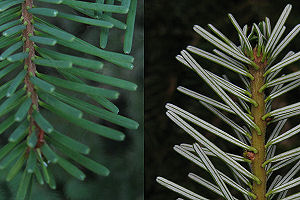
Needles: Pacific Silver Fir has needles similar to grand fir, dark green on top with white lines underneath. But the needles point forward and upward rather than lying flat like grand fir needles.

Needles - upper and lower surfaces
Cones: The cones sit upright on the branch and turn from green to purple. Like other firs, the cones fall apart at maturity, leaving a cone core spike on the branch. The pollen cones look like tiny, pea-size raspberries.
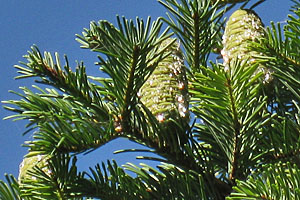
Bark: Young bark is gray and smooth with resin blisters. Older bark breaks into gray scaly plates.
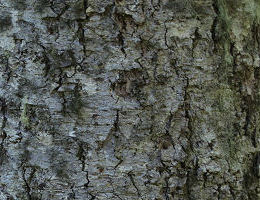
Where it grows: Pacific Silver Fir grows at mid to higher elevations of the Cascades, in the Olympic Mountains, and in a few locations in the Coast Range in Oregon and Washington. It often grows in pure stands of large trees and sometimes near the timberline, mixed with Subalpine Fir and Mountain Hemlock. It also grows in southeast Alaska, Vancouver Island and along the coast of British Columbia.
Pacific silver fir at Hoyt Arboretum
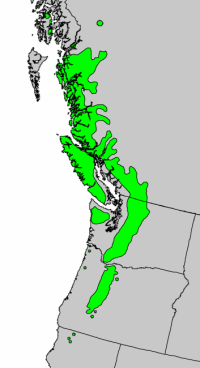
Similar tree: Subalpine Fir also grows near the timberline and has a similar appearance, but it has white lines on both the upper and lower sides of the needles.
Uses: Native people used the boughs for floor bedding, chewed the pitch as gum, and used the wood for firewood. Today the wood is mostly used as a source of pulp for making paper.
Names: The common name reflects the color of the lower surface of the needles and the silvery bark. David Douglas named it amabilis, which means "lovely." Other common names: White Fir, Red Fir, Lovely Fir, Amabilis Fir, and Cascades Fir.
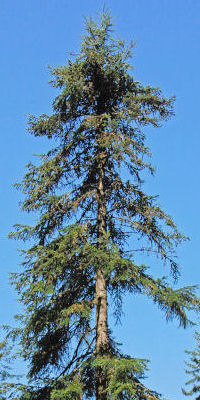
© 2011 Ken Denniston